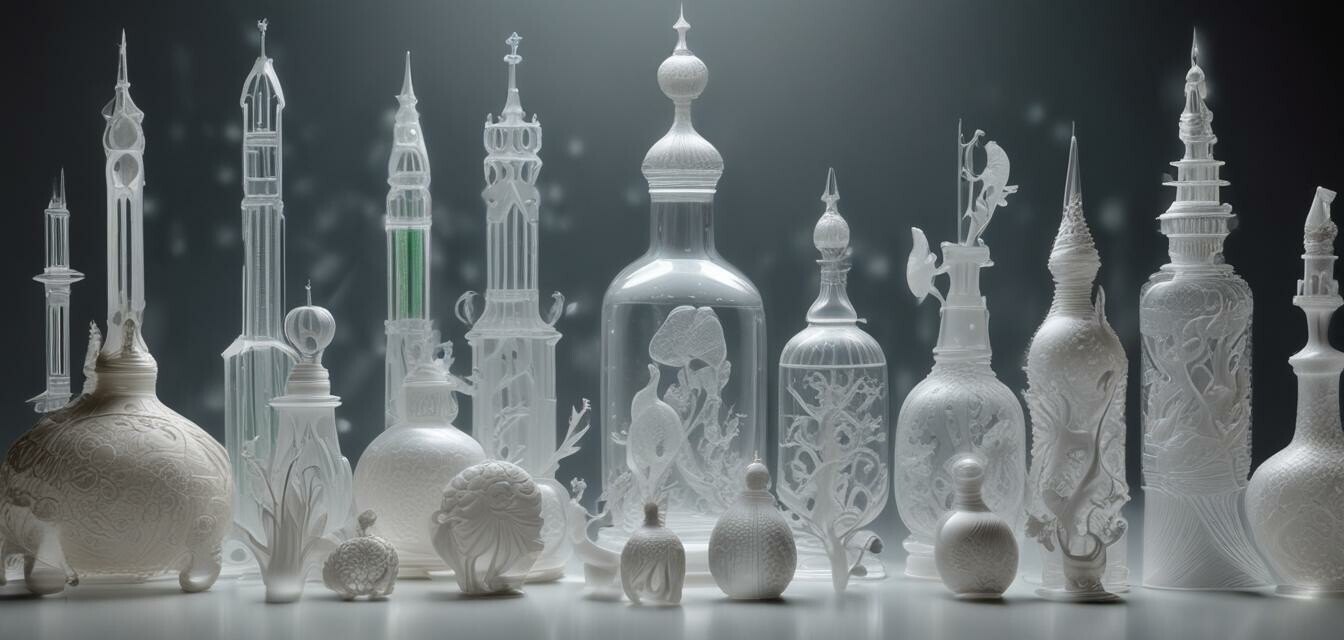
The role of 3D printing in custom glass molds
Key Takeaways
- 3D printing technology enhances precision in creating custom glass molds.
- Allows for unique and intricate designs that would be difficult to achieve with traditional methods.
- Reduces production time and cost for glass artists.
- Facilitates rapid prototyping, making it easier to iterate on designs efficiently.
- Encourages innovation and expands the creative possibilities for glass artists.
In the world of glass making, the introduction of 3D printing has opened a myriad of possibilities for artists and craftspeople alike. This innovative technology is not just a passing trend; it's revolutionizing the way custom glass molds are designed and manufactured. With the ability to produce molds that are both precise and complex, 3D printing allows for an unprecedented level of creativity in glass art creation.
Understanding 3D printing technology
3D printing, also known as additive manufacturing, is a process of creating three-dimensional objects from a digital file. This technology works by layering materials, such as plastic or resin, to build a structure from the ground up. In the context of glass molds, 3D printing is increasingly being utilized to create forms that provide artists with unique options that traditional mold-making methods simply cannot achieve.
Benefits of using 3D printing in glass mold design
Utilizing 3D printing for crafting glass molds offers several advantages:
- Precision: 3D printers create incredibly detailed and accurate molds, ensuring that every curve and feature is replicated perfectly.
- Customization: Artists can design molds tailored to their specific artistic vision, allowing for personal expression in their work.
- Efficiency: The rapid prototyping capabilities of 3D printing reduce the time required to create molds, allowing artists to spend more time on their glass projects.
- Cost-effectiveness: Although the initial investment in 3D printing technology may seem high, the long-term savings on materials and labor can be significant.
Examples of 3D printed glass molds
There are countless possibilities when it comes to designing molds using 3D printing technology. Here are some popular types of molds that can be created:
| Type of Mold | Description |
|---|---|
| Bowl molds | Molds designed to create various shapes and sizes of bowls, often with intricate patterns and textures. |
| Plate molds | Custom-designed molds for plates, featuring unique edges or detailed designs to enhance decorative pieces. |
| Jewelry molds | Molds originally crafted for jewelry designs, allowing for creative shapes and fine details in glass jewelry. |
| Intricate casting molds | Molds that enable complex designs, ideal for artistic pieces that require a high level of detail. |
The process of creating a custom glass mold via 3D printing
Creating custom glass molds using 3D printing typically involves several key steps:
- Conceptual design: The artist begins with an idea and creates a digital file using design software.
- 3D printing: The mold is printed using a 3D printer, utilizing materials suitable for glass casting.
- Finishing touches: Once printed, the mold may require sanding or additional detailing to ensure it meets the desired specifications.
- Glass casting: The prepared mold is used to shape molten glass into the final product.
Challenges and considerations
While the benefits of using 3D printing in glass mold making are significant, there are also challenges to consider:
Pros
- Highly customizable mold designs.
- Quicker turnaround times compared to traditional methods.
- Lower costs for small production runs.
- Accessibility for artists looking to experiment.
Cons
- Potential learning curve for new technology.
- Initial investment in 3D printing equipment can be high.
- Durability of printed molds may vary based on materials.
Conclusion
3D printing is undoubtedly changing the landscape of glass mold making. With the ability to create precise, one-of-a-kind molds that cater to an artist’s unique vision, it bridges the gap between creativity and technology. As glass artists continue to explore this innovative approach, the possibilities for new designs and artistic expressions are endless. To learn more about various molds available for glass making, check out our Glass Molds category on our site.
Further exploration
If you're looking to expand your knowledge and skills in glass crafting, consider diving into these related topics:

